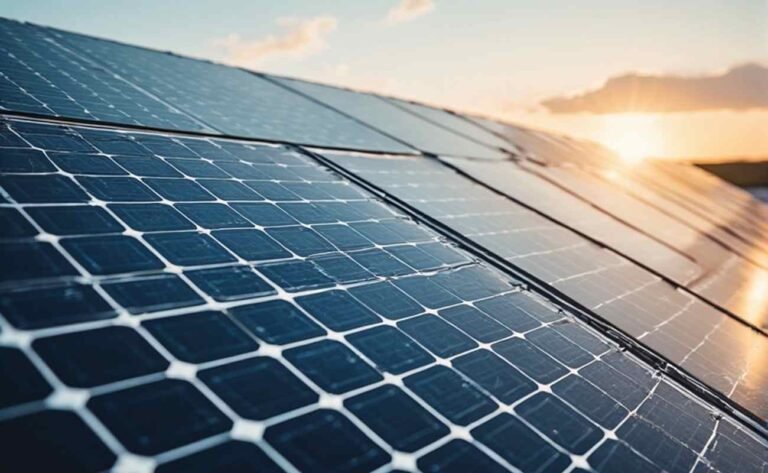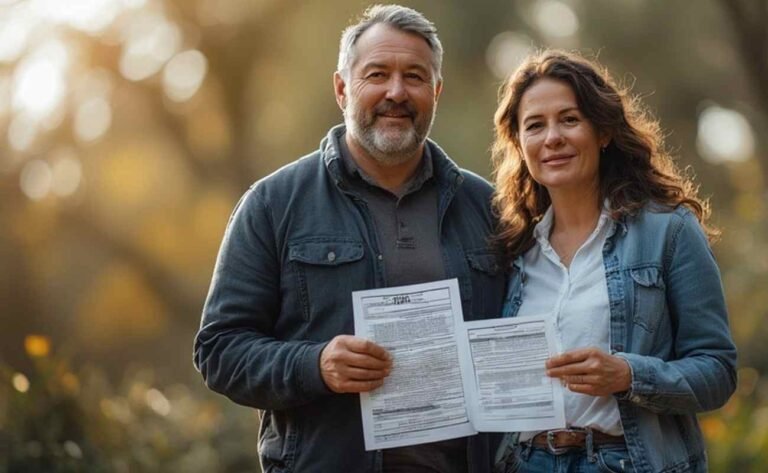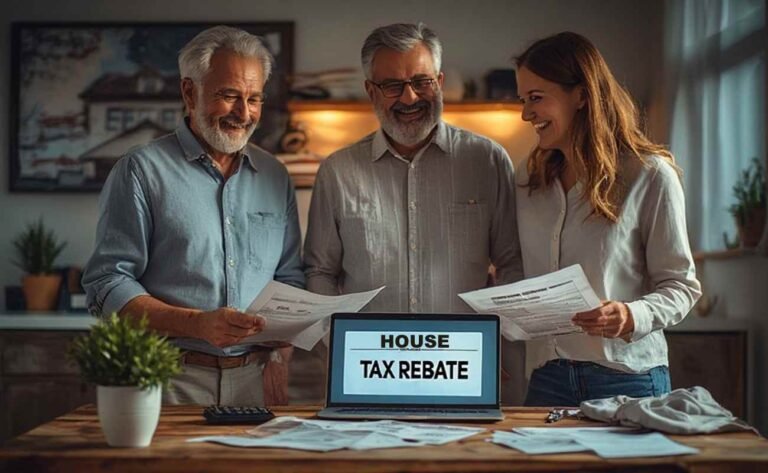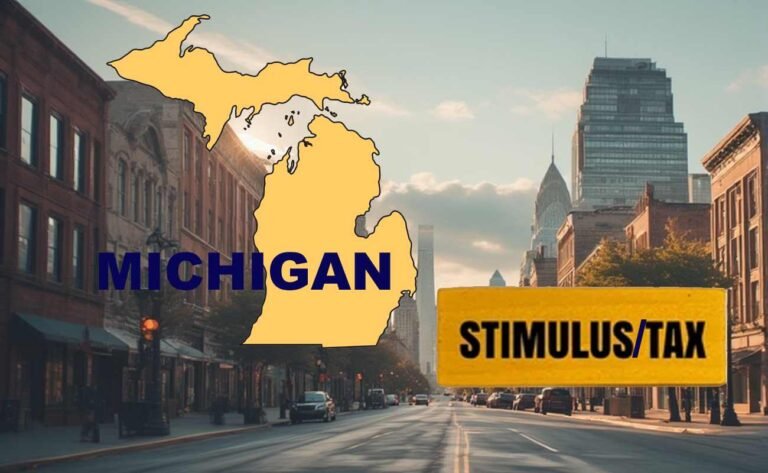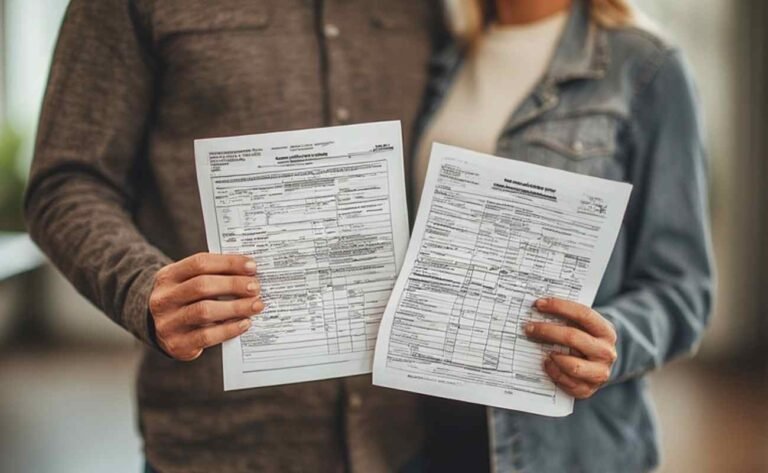IRS Confirms New $2,000 Tax Rebate for Homeowners – Here’s How to Claim
The IRS has confirmed details for a valuable tax benefit aimed at homeowners making energy-efficient upgrades in 2025. This new $2,000 tax rebate, part of the expanded Energy Efficient Home Improvement Credit under Section 25C, allows eligible homeowners to claim up to $2,000 for specific improvements like heat pumps, biomass stoves, and boilers. It’s not a direct cash payout but a credit that reduces your federal tax bill, and it’s available for upgrades made after January 1, 2023, with updated guidance released in early 2025. To qualify, you must own and live in the home as your primary residence, and the improvements need to meet strict energy efficiency standards set by the IRS and ENERGY STAR.
Homeowners can combine this with other credits for a total of up to $3,200 annually, but the $2,000 cap applies specifically to high-impact items. You’ll need to file IRS Form 5695 with your 2025 tax return, keeping receipts and certifications handy. This rebate encourages sustainable home changes, potentially saving you money on energy bills while lowering your taxes. However, not every upgrade qualifies, so understanding the rules is key to maximizing your benefits.
Understanding the Basics of the Homeowner Tax Benefit
First off, this isn’t some brand-new program out of nowhere. The IRS built on the Inflation Reduction Act from 2022, and in January 2025, they issued Fact Sheet FS-2025-01 to clarify limits and qualifications. Essentially, it’s a non-refundable tax credit, meaning it reduces what you owe but won’t give you a refund if it’s more than your tax liability. That said, any unused portion can carry forward to future years.
Additionally, this credit targets energy savings, so think green upgrades that cut your utility costs long-term. Homeowners across the U.S. are taking advantage, especially with rising energy prices. But remember, it’s for existing homes—not new builds, which have their own separate credits.
Key Features of the $2,000 Energy Credit for Homes
- Credit Amount: Up to $2,000 for qualifying heat pumps, heat pump water heaters, biomass stoves, and boilers.
- Overall Annual Limit: Combines with other improvements for a max of $3,200 per year.
- Eligibility Period: Applies to installations from 2023 through 2032, with 2025 claims filed in 2026.
- Tax Form Required: IRS Form 5695, attached to your federal return.
- Non-Refundable Nature: Reduces tax owed; excess carries over.
Who Qualifies for the IRS Home Energy Rebate?
Eligibility isn’t too complicated, but you have to check a few boxes. The IRS focuses on homeowners who make real improvements to their primary residence. Renters or secondary homes don’t count here. Furthermore, your income doesn’t directly affect eligibility—unlike some rebates, this one’s available regardless of earnings, as long as you owe taxes.
However, the home must be in the U.S., and you need to be the owner. If you’re married filing jointly, both spouses can claim if applicable. I’ve heard from friends who missed out because they didn’t realize vacation homes were excluded—don’t make that mistake.
Eligibility Criteria List
Here’s a straightforward list to see if you fit:
- Homeownership Status: You must own the home and use it as your main residence for most of the year.
- U.S. Location: The property has to be in the United States, including territories.
- Installation Timeline: Upgrades must occur after January 1, 2023, and before the end of 2032.
- Energy Standards Met: Products need certifications from manufacturers aligning with ENERGY STAR or IRS guidelines.
- Tax Filing Requirement: You file a federal tax return and have a tax liability to offset.
- No Double-Dipping: Can’t claim if you already got rebates from state programs for the same upgrade.
- Documentation Ready: Keep invoices, manufacturer certifications, and photos of installations.
- Primary Residence Only: Excludes rentals, vacation homes, or business properties.
- U.S. Citizen or Resident: Generally for taxpayers with a valid SSN or ITIN.
- No Income Caps: Open to all income levels, making it accessible for many.
Qualifying Home Upgrades for the $2,000 Tax Credit
Now, let’s get into what actually counts. The $2,000 portion specifically covers bigger-ticket items that boost energy efficiency. Other smaller upgrades fall under a separate $1,200 cap, but together they hit that $3,200 max. For instance, installing a heat pump could qualify for the full $2,000 if it costs enough and meets specs.
To make this clear, I’ve put together a table of qualifying categories. This way, you can quickly scan and plan your projects. Remember, always verify with the manufacturer for certification.
Table of Qualifying Energy-Efficient Improvements
| Category | Description | Credit Limit | Examples | Required Standards |
|---|---|---|---|---|
| Heat Pumps | Devices that heat and cool your home efficiently | 30% of cost, up to $2,000 | Air-source or ground-source heat pumps | ENERGY STAR certified, SEER2 ≥ 16, HSPF2 ≥ 8.1 |
| Heat Pump Water Heaters | Electric water heaters using heat pump tech | 30% of cost, up to $2,000 | Models with integrated or split systems | Energy Factor ≥ 3.0, Uniform Energy Factor ≥ 3.25 |
| Biomass Stoves | Stoves burning biomass fuel like wood pellets | 30% of cost, up to $2,000 | Pellet stoves, wood-burning inserts | 75% thermal efficiency, EPA certified |
| Biomass Boilers | Boilers using biomass for home heating | 30% of cost, up to $2,000 | Hydronic or forced-air systems | 75% thermal efficiency, low emissions |
| Other Energy Properties (Combined with Above) | Windows, doors, insulation, etc. | Up to $1,200 total | Skylights, exterior doors | U-factor ≤ 0.30, SHGC ≤ 0.30 for windows |
| Home Energy Audits | Professional audits to identify savings | 30% of cost, up to $150 | Certified auditor visits | Must be independent, not tied to sales |
This table covers the main ones for 2025. Notice how the $2,000 is capped per year, so spacing out projects might help if you’re over.
Step-by-Step Guide to Claiming Your Homeowner Tax Rebate
Claiming this isn’t rocket science, but it does require some paperwork. Start early in the year if you’re planning upgrades. First, research products—I’ve found checking ENERGY STAR’s site helpful for verified options.
Then, hire qualified installers; DIY might not qualify if certification is needed. After that, keep everything organized for tax time. Here’s the process in steps:
- Assess Your Home: Identify needed upgrades, perhaps with a $150 credit-eligible energy audit.
- Choose Qualifying Products: Buy items that meet IRS specs—look for manufacturer statements.
- Install the Upgrades: Use licensed contractors for complex items like heat pumps.
- Gather Documentation: Save receipts, certifications, and model numbers.
- Calculate Your Credit: Use 30% of costs, respecting caps (e.g., $2,000 for heat pumps).
- File Form 5695: Attach to your 1040 when filing taxes in 2026 for 2025 expenses.
- Submit Your Return: E-file or mail; keep copies for at least three years.
- Track Carryovers: If credit exceeds liability, carry forward to next year.
- Amend if Needed: If you forget, file an amended return within three years.
- Consult a Pro: If unsure, talk to a tax advisor to avoid errors.
Following these steps, I once claimed a similar credit without issues—it just took staying organized.
Benefits and Savings from Energy-Efficient Home Credits
Beyond the tax savings, these upgrades pay off over time. For example, a heat pump might cut your heating bill by 50%, adding up to thousands in savings. Plus, they increase home value—buyers love energy-efficient features.
However, weigh costs upfront. A $6,000 heat pump could yield $1,800 in credit (30%), but long-term, it’s a win. Let’s list out the perks:
- Tax Reduction: Directly lowers your federal bill by up to $2,000.
- Energy Bill Savings: Average homeowner saves $500+ yearly on utilities.
- Environmental Impact: Reduces carbon footprint with efficient tech.
- Home Value Boost: Up to 5% increase in resale value per studies.
- Health Improvements: Better air quality from modern systems.
- Stackable Incentives: Combine with state rebates for more savings.
- Long-Term Durability: Qualifying items often last 15-20 years.
- Inflation Hedge: Locks in lower energy costs amid rising prices.
- Accessibility: No income limits make it inclusive.
- Future-Proofing: Prepares your home for stricter energy codes.
If you’re exploring other tax perks, like refunds for specific groups, take a look at this 3000 IRS Refund July 2025 Guide—it ties in nicely if you’re a senior.
Common Mistakes to Avoid with IRS Tax Credits for Homes
People often trip up here, so let’s cover pitfalls. Forgetting documentation is huge—IRS audits can happen. Also, assuming all “green” products qualify; they don’t. I’ve seen neighbors buy off-brand items and get denied.
List of Common Errors and How to Fix Them
- Missing Certifications: Always get manufacturer docs; request them at purchase.
- Wrong Home Type: Ensure it’s your primary residence; verify with deeds.
- Exceeding Caps: Track spending—don’t go over $2,000 on capped items.
- No Audit for Complex Claims: Get one if claiming multiple upgrades.
- Filing Without Form 5695: Download from IRS site; it’s free.
- Ignoring Labor Costs: Some include installation; check rules.
- Double-Claiming: Avoid if you got utility rebates.
- Late Filing: Claim in the year after installation.
- Income Miscalculation: Though no caps, ensure you owe taxes.
- Not Carrying Forward: Use software to track excess credits.
Comparing This Rebate to Other Homeowner Benefits
How does this stack up? It’s more generous than pre-2023 credits, which capped at $500 total. Versus state programs, it’s federal, so nationwide.
Comparison Table: $2,000 IRS Credit vs. Similar Programs
| Feature | IRS $2,000 Home Energy Credit | Residential Clean Energy Credit | State Energy Rebates (e.g., CA) | Child Tax Credit Enhancement |
|---|---|---|---|---|
| Max Amount | $2,000 for specific items | 30% of costs, no cap | Varies, up to $5,000 | $2,200 per child |
| Eligibility | Homeowners, primary home | Solar, wind installs | State residents only | Parents with kids under 17 |
| Focus | Energy upgrades like heat pumps | Renewable energy sources | Local incentives | Family support |
| Refundable? | No, non-refundable | No | Sometimes yes | Partially |
| Duration | Through 2032 | Through 2034 | Varies by state | Permanent from 2025 |
| Form Needed | 5695 | 5695 | State forms | Schedule 8812 |
This table shows it’s targeted but stackable. For official IRS details, head to the IRS Energy Efficient Home Improvement Credit page.
FAQs on the New $2,000 Tax Rebate for Homeowners
Questions come up a lot, so here’s a list based on what I’ve seen online and from talks with folks.
Frequently Asked Questions List
- Is this a check from the IRS? No, it’s a credit on your tax return, reducing what you owe.
- Can I claim for 2024 upgrades in 2025? Yes, but file in the appropriate year.
- What if my upgrade costs less than $6,667? Credit is 30%, so for $2,000 max, need at least that spent.
- Are there age requirements? No, any adult homeowner qualifies.
- Does it apply to condos? Yes, if it’s your primary residence and you own it.
- Can businesses claim? No, it’s for individuals only.
- What about rentals? Landlords can’t for tenant-occupied units.
- Is labor included? Yes for heat pumps, but not all items.
- How do I find certified products? Check ENERGY STAR Federal Tax Credits.
- What if I sell my home? Credit stays with you, not the buyer.
- Are there penalties for wrong claims? Yes, audits could lead to owed taxes plus interest.
- Can I combine with solar credits? Yes, separate program.
- Is it phased out? No, full through 2032.
- What about low-income households? Check HEEHR rebates for up to $8,000 additional.
- How long for IRS processing? Usually with your refund, 6-8 weeks.
Additional Tips for Maximizing Your Energy Tax Savings
To wrap up, plan ahead. Talk to contractors early—demand is high. Also, consider bundling with other benefits. For instance, if you’re in a state like New York with inflation relief, layer them. Check out this New York 400 Inflation Relief Check Guide for ideas.
Track energy use pre- and post-upgrade to see real savings. It’s satisfying watching bills drop. With these lists and tables, you should have everything to get started.


